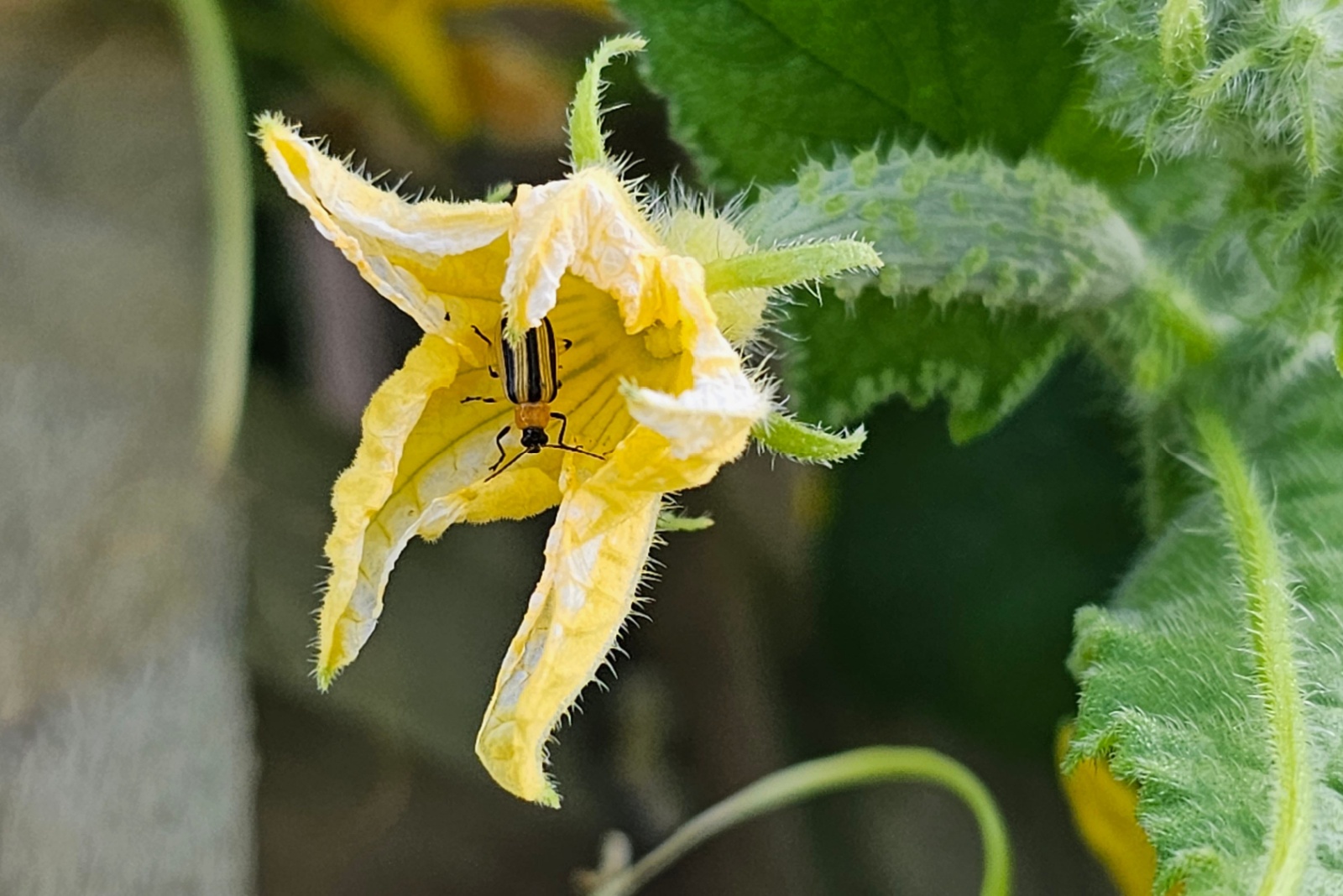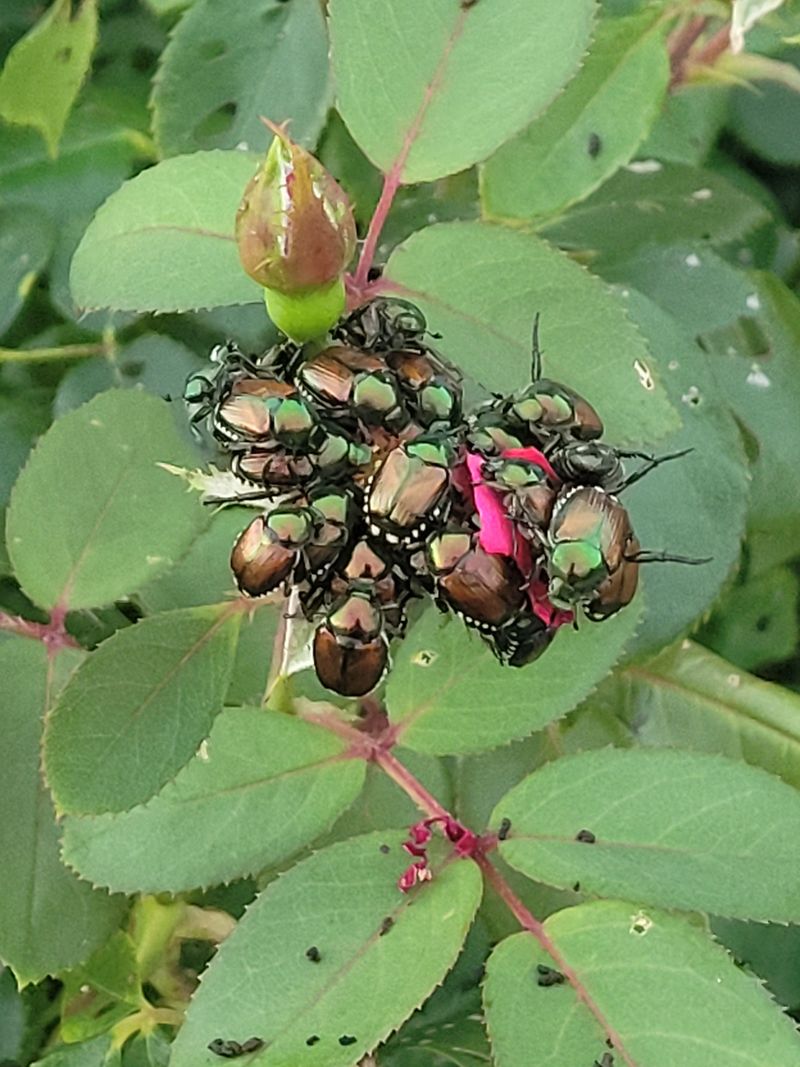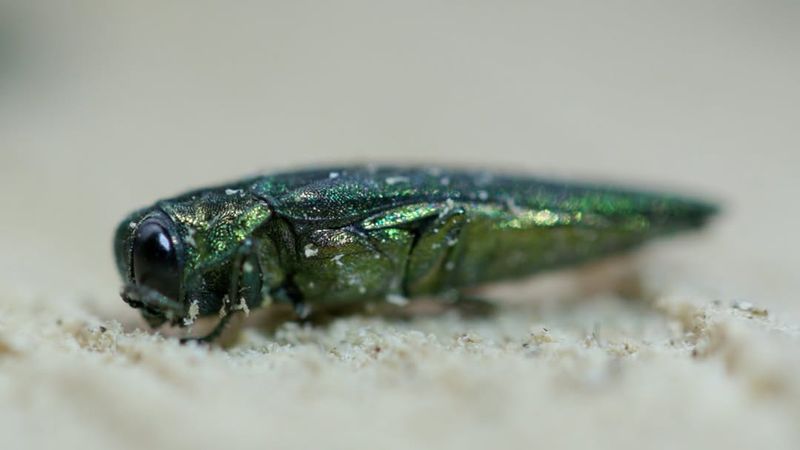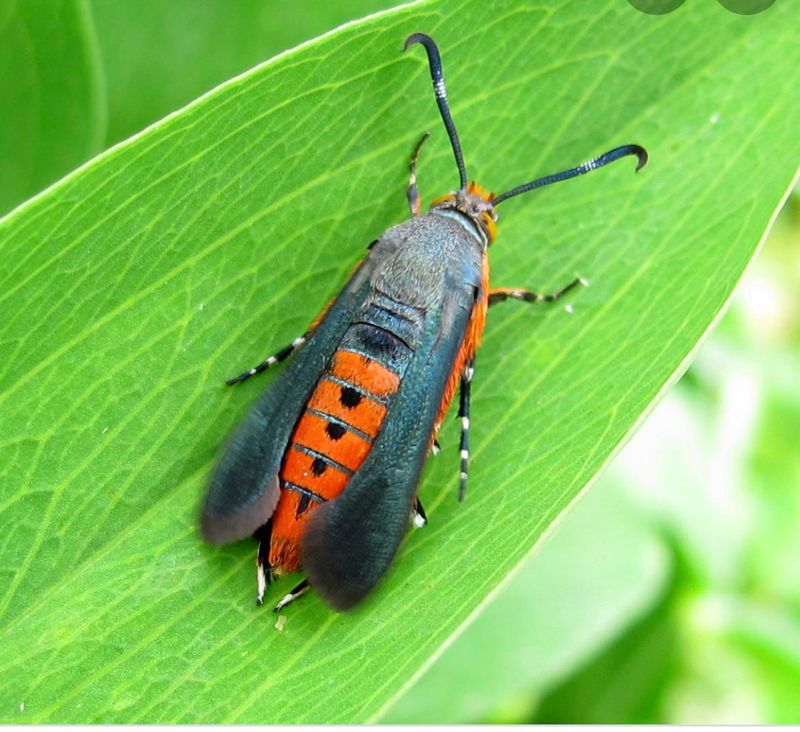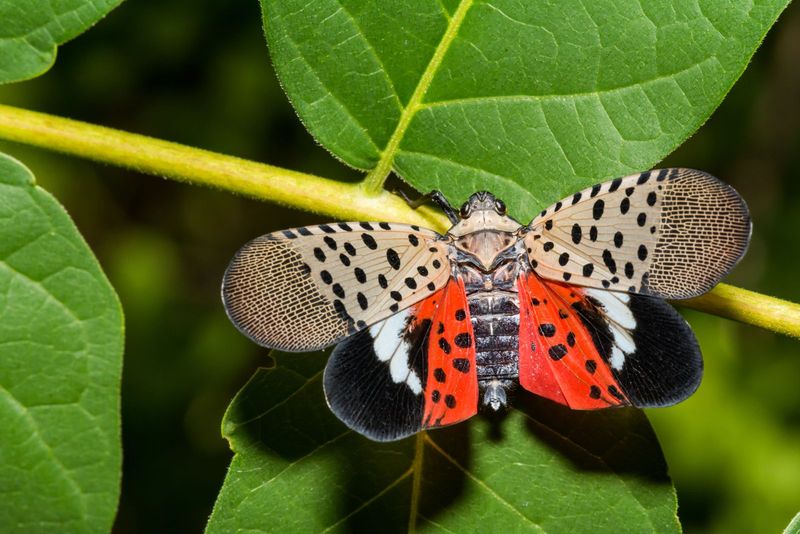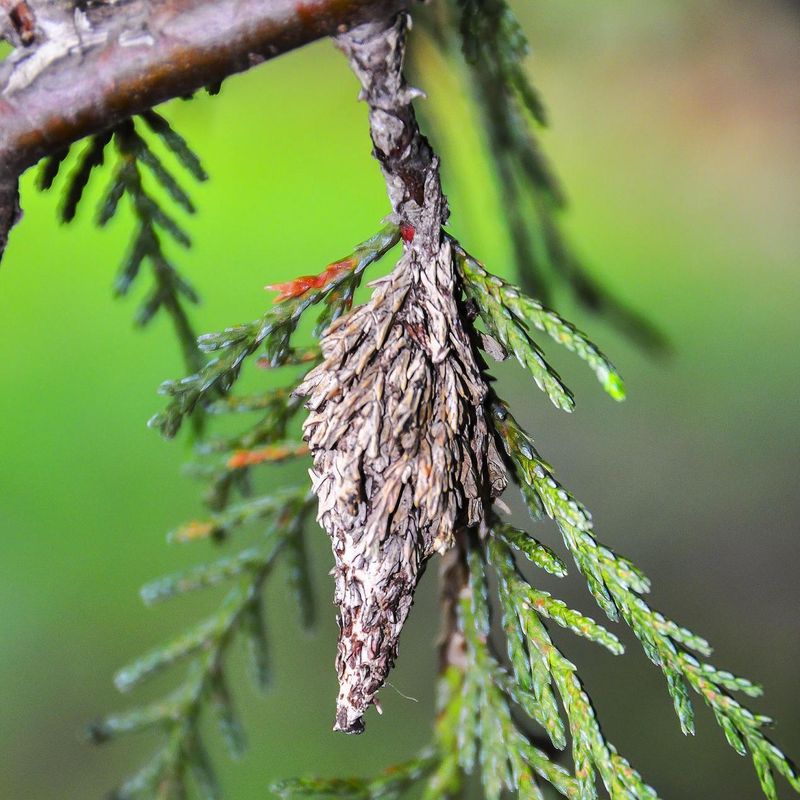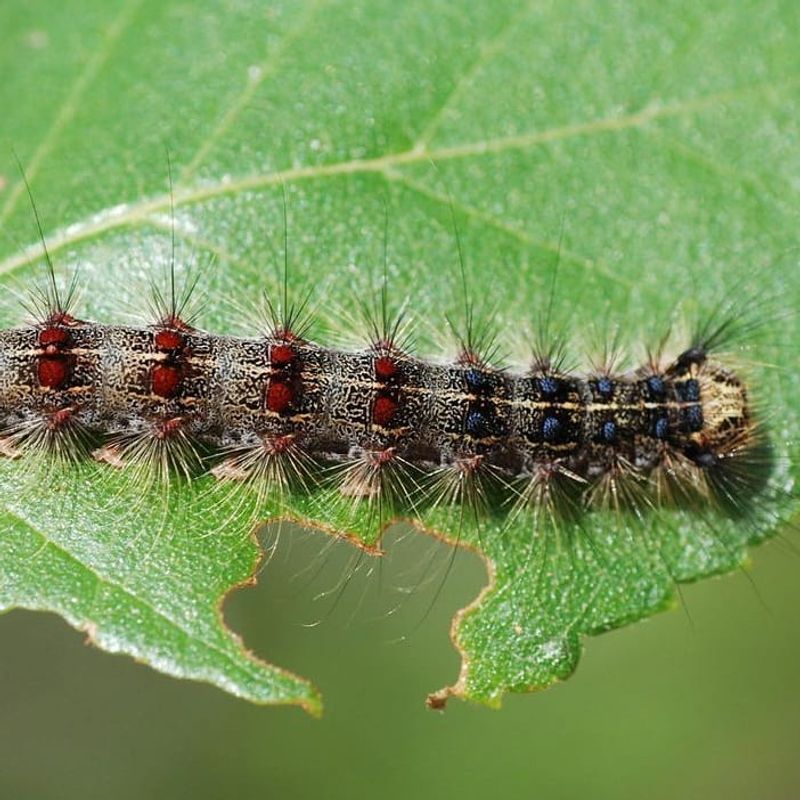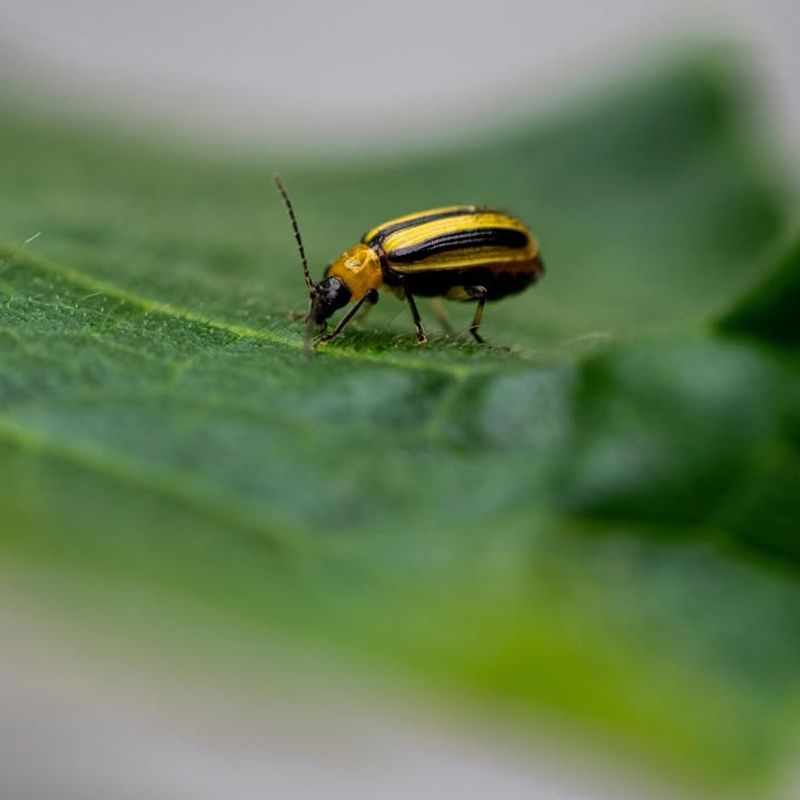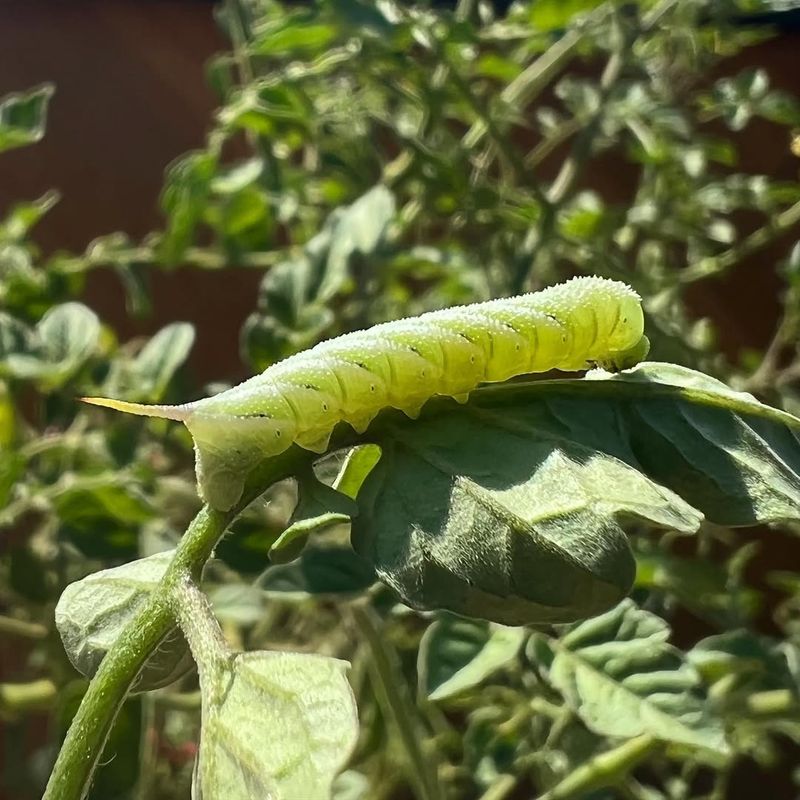Missouri gardens face unique challenges from destructive insects that can devastate plants overnight. As temperatures rise each spring, these pests emerge ready to munch through your carefully tended vegetables, ornamentals, and trees.
Knowing which insects pose the biggest threats allows gardeners to take swift action before infestations spiral out of control.
1. Japanese Beetles: The Metallic Plant Destroyers
These copper-green insects might look pretty, but they’ll skeletonize your roses and over 300 other plant species in days. I’ve watched entire rose bushes in my Columbia garden transform from lush to lacey remains after just one weekend away.
Manual removal in early morning works best when they’re sluggish. Drop them into soapy water rather than squishing, as their scent attracts more beetles. My neighbor uses trap plants like geraniums to lure them away from valuable specimens.
For severe infestations, consider milky spore treatment for your lawn to target their grub stage where they spend most of their lifecycle.
2. Emerald Ash Borers: Silent Tree Killers
Bright metallic green and surprisingly small, these invasive beetles have destroyed millions of ash trees across Missouri since 2008. The damage happens beneath the bark where larvae create S-shaped tunnels, cutting off the tree’s nutrient flow.
Warning signs include D-shaped exit holes in bark, unusual woodpecker activity, and crown dieback starting at the top of the tree. My Springfield neighborhood lost seven mature ashes before we recognized the pattern.
Prevention through specialized insecticide treatments is the only effective protection for valued ash trees. Once symptoms appear, it’s often too late to save them.
3. Squash Vine Borers: The Garden Heartbreakers
Nothing crushes a gardener’s spirit quite like finding wilted squash plants at their peak. These moth larvae tunnel inside stems, causing sudden collapse just as fruits begin forming. Last summer, my entire zucchini patch in Kansas City wilted overnight despite looking perfect the previous evening.
Look for sawdust-like frass (insect waste) around small holes in stems near the soil line. Split open affected vines and you’ll find fat, white grubs with brown heads gorging inside.
Wrapping lower stems with aluminum foil creates a physical barrier. Applying beneficial nematodes to soil in early spring disrupts their lifecycle before they can attack.
4. Spotted Lanternflies: The Colorful Invaders
Though relatively new to Missouri, these striking red-spotted insects pose a major threat to vineyards, orchards, and hardwood trees. They extract sap in massive numbers, weakening plants and excreting honeydew that promotes sooty mold growth.
Adults have distinctive gray forewings with black spots, while nymphs are black with white spots before developing red patches. A friend in eastern Missouri recently discovered them on her property after noticing sticky residue dripping from trees.
Report sightings immediately to the Missouri Department of Conservation. Scrape egg masses (which resemble mud patches) from trees during winter months and destroy them in alcohol or hand sanitizer.
5. Bagworms: Hanging Destroyers of Evergreens
Those innocent-looking spindle-shaped bags hanging from your evergreens actually contain voracious caterpillars that can defoliate entire trees. The camouflaged cases, made from bits of the host plant, make them easy to overlook until serious damage occurs.
Walking through my Jefferson City neighborhood last August, I noticed several junipers and arborvitae turning brown. Upon closer inspection, dozens of bagworm cases hung from each affected branch, with hungry caterpillars emerging to feed.
Hand-picking bags during winter months eliminates next season’s population. For large infestations, Bacillus thuringiensis (Bt) spray works effectively when caterpillars are young and still feeding actively.
6. Gypsy Moth Caterpillars: Fuzzy Forest Destroyers
Hairy and distinctive with blue and red dots along their backs, these caterpillars can strip entire oak trees bare in weeks. Their population explodes cyclically, creating devastating outbreaks that threaten Missouri’s precious hardwood forests.
During a camping trip near the Missouri-Arkansas border, I witnessed thousands covering tree trunks, their constant munching sounding like gentle rainfall. The oaks looked winter-bare despite it being mid-June.
Homeowners should check for tan-colored egg masses on tree trunks, outdoor furniture, and buildings during fall and winter. Scrape them off and soak in soapy water to prevent spring hatching and protect vulnerable trees.
7. Cucumber Beetles: The Disease-Spreading Menace
These yellow-and-black striped or spotted beetles do double damage – first by feeding directly on plants, then by transmitting bacterial wilt disease. Once infected, cucumber and melon vines collapse rapidly with no chance of recovery.
My vegetable garden in St. Louis battled these persistent pests for years. The most frustrating part? Plants can look perfectly healthy one day, then wilt permanently the next after beetles transmit disease while feeding.
Floating row covers during early season protect young plants when they’re most vulnerable. Companion planting with radishes and nasturtiums helps repel them naturally. Remove and destroy infected plants immediately to prevent disease spread.
8. Tomato Hornworms: Green Giants of Destruction
Despite their impressive size (reaching 4 inches long), these caterpillars blend remarkably well with tomato foliage until you notice entire stems stripped bare overnight. Their appetite is simply astonishing – one hornworm can defoliate a young tomato plant in just days.
After losing half my crop last summer in Branson, I started checking plants at dusk with a blacklight flashlight. The caterpillars glow brightly, making them easy to spot when they’re most active.
Look for black droppings on leaves as early warning signs. When you find hornworms carrying small white cocoons on their backs, leave them be! These are beneficial braconid wasp cocoons that will hatch and attack more hornworms.

